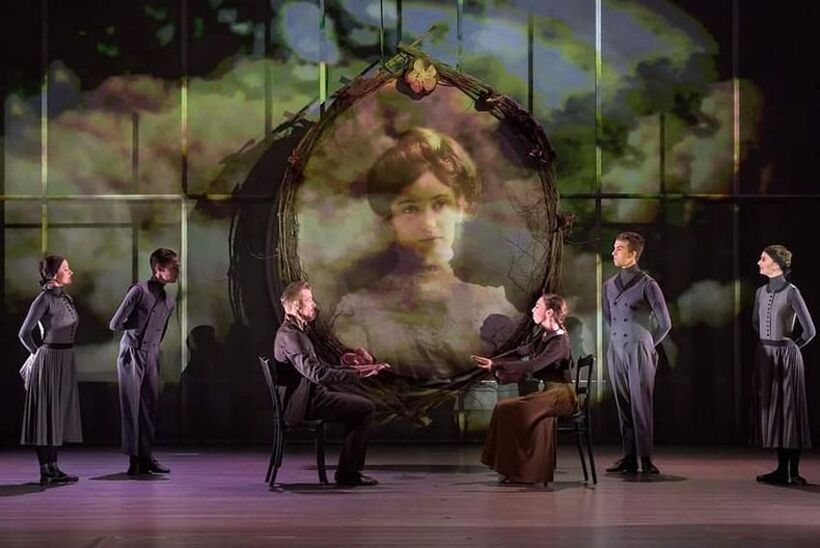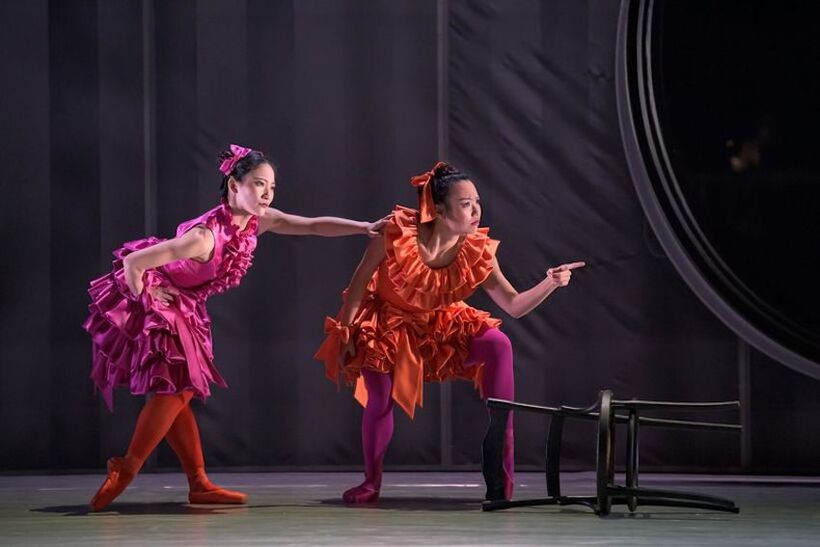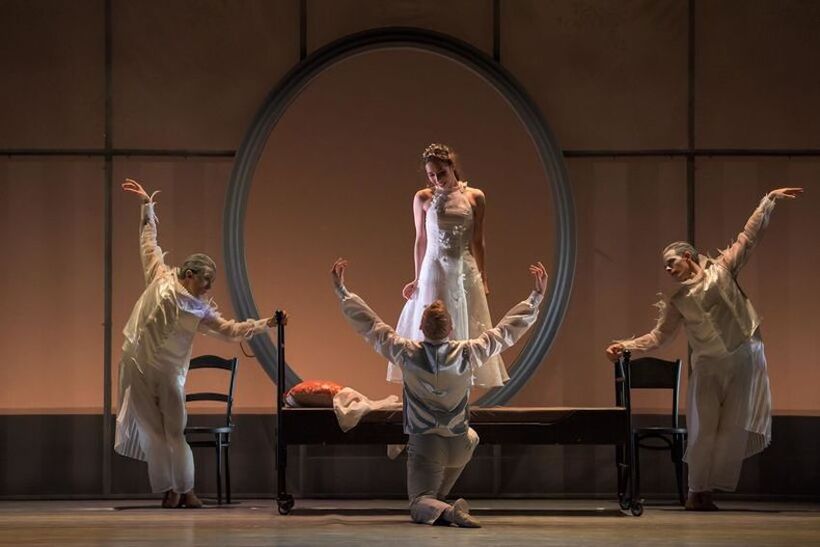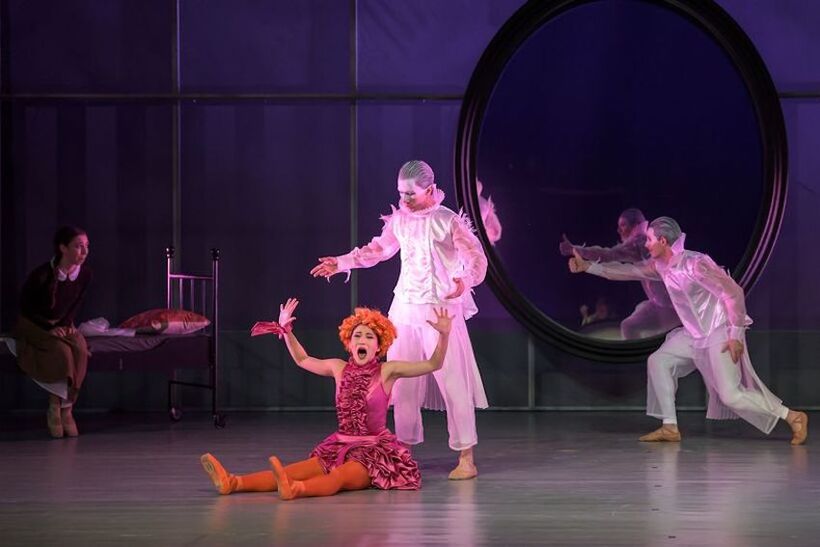The most important score for the 20th century was that of Sergei Prokofiev, who composed Cinderella (Russian: Zolushka) in difficult conditions during World War II. The premiere could only take place after the end of the war, in two choreographic versions in succession (1945 Moscow, Rostislav Zakharov and 1946 Leningrad, Konstantin Sergeyev). Prokofiev's Cinderella soon made its mark on the history of the newly established national ballet companies: in 1948 it was staged by Frederic Ashton in London and by the aforementioned Saša Machov in Prague. The last century has brought a plethora of choreographic and directorial adaptations. Among the most famous ones we can mention the Lyon version by Maguy Marin (1985), the Paris version by Rudolf Nureyev (1986) or the Hamburg version by John Neumeier (1992).
Cinderella is still popular in the twenty-first century. Prokofiev's music, full of energy, dynamism and wit, blends well with the most contemporary dance styles (e.g. Jiří Bubeníček for Compagnia Nuovo Balletto di Toscana, Florence, 2019) and the ancient story allows for many interpretations. It is up to the talent of the stager to exploit the potential of the music and the theme. The Czech track continues to do this successfully in the case of Petr Zuska, the author of the reviewed performance by the South Bohemian Theatre Ballet on 4 February 2023.
Petr Zuska approached the staging of Cinderella with a clear idea of what the personnel of the company and the conditions of the theatrical realization in the Metropol House of Culture would look like. This has resulted in the quality of the performance, which is based on the possible, but in the case of the dancers' performances, it sets new standards and challenges them for further development. Zuska hit the mark with his Cinderella in terms of the expectations of the (not only) České Budějovice audience: the standing ovation and the comments of the audience testified to this. First of all, he adapted his version into a form that is truly a family performance: a small viewer counts, but for an adult it is an artistic experience as well. He has shortened the score from its original length of around two hours to around 80 minutes, and the performance has two acts and one intermission. He has chosen musical numbers of a more allegro nature without completely abandoning the more lyrical moments.

It should be emphasized that every ballet performance with live orchestra has been a special event for several years. There are a number of reasons for this: the popularity of musical collages by contemporary choreographers, space constraints and, above all, financial savings. All this leads to the "phenomenon of the musically dead ballet", as Roman Vašek aptly named the situation some time ago. Therefore, it is extremely positive that the new premiere of the South Bohemian Theatre Ballet is supported by Prokofiev's score carefully musically prepared by David Švec and interpreted by the South Bohemian Theatre Opera Orchestra. It was a joy to watch the tiny figures of the children before the performance trying to peer into the orchestra pit, from where they would soon hear the music they would see danced. And that's what ballet is all about: the joy of the synergy of musicians and dancers in the here and now...
Based on the original libretto by Nikolai Volkov, the ballet begins with a quarrel between the stepsisters. Petr Zuska, however, based his version of the story on the Brothers Grimm version, which begins with the death of Cinderella's mother. The theme of death, the passing of beloved parents, appears twice in Zuska's Cinderella. Zuska softens this trauma by imagining the doves as departing souls, but they are not completely lost. Even the deceased mother appears to Cinderella in a mirror at difficult moments. And she also sends two other doves to help her with an invitation to the ball. They then take on other roles: dance masters and would-be "make-up artists", ball guests, the Prince's entourage in foreign lands... Petr Zuska has thus both replaced many of the other characters that Volkov included in the ballet and strengthened the dramatic tightness of the plot.

Staging Prokofiev's ballet with a chamber ensemble is not easy, as it was intended for a large company. In particular, the ball scene presents a great challenge without the chorus - and the ball simply cannot be omitted in this story. For it, Zuska used two pairs of dancers (Petronela Bogdan, Barbora Coufalová, Daniel Frydrych, William Steers) who had to quickly change out of their servants' clothes (including wigs). The disguises were not lost on the representatives of the stepsisters, who "in the meantime" took up the Spanish Dance (Shino Fujii) and the Oriental Dance (Mai Iwamoto). The adaptation of the libretto was therefore absolutely necessary, and it can be said that Zuska here created a functional dramatic construction that matched his choreography and design.
Jakub Kopecký designed a very sober but theatrically effective set, in greyish shades with passages through a central oval mirror, covered in some of the scenes by a portrait of the deceased mother. For the next scene, he then added two more oval passages that detracted from the austerity, the ball being illuminated from above by fluorescent lights in a parquet design. Projection was also used, but fortunately only in a very economical and tasteful way. The costumes by Pavel Knolle, who opted for a striking combination of orange with bright pink for the stepsisters combined with emerald green for the stepmother, reflected well against this scene. The latter danced in a decent trouser suit with a black bubikopf wig and it must be stressed that Aurora Kubelíková, a new member of the company, interpreted it with great verve and skill. For the other protagonists Knolle used costumes in white or silver combined with grey-black or brown, the ball couples wore turquoise and purple. The whole looked very balanced and Petr Zuska was able to work very inventively with these colour combinations on the dancers' costumes, visually filling the stage in the mass scenes and adding further visual interest. The tall white mobile throne with its many legs was also amusing, allowing for quick shifts around the stage as well as "frozen" images of the larger group of protagonists.

I had the joyful impression of a harmonious combination of all the components, which is not usually the case. It's as if the constraints inspired the creators to come up with interesting solutions. From the point of view of effects direction, it would have been worthwhile to better devise the transformation of the stepmother and her daughters into ravens in Zuska's second act; this moment was not entirely legible. The costumes of Cinderella's helpers - doves in human form - would also have been worth modifying a bit more so that even a child viewer could better understand when they are in the form of doves, emissaries of Cinderella's mother's immortal love, and when they are in the form of people pretending to help the stepmother or dancing at the ball, etc.
The choreographer and the director has managed to fill the stage with dance that is in perfect harmony with the music, one could say that "dance and music are one". Zuska makes use of the varied rhythms of Prokofiev's music and manages to lead the dancers in such a way that their movements spring spontaneously from the music and everything feels natural and authentic. The result is a specific hedonistic joy. Zuska has arrived at an ideal synthesis of movements of the whole body, creating meaning through the torso without giving up the virtuosity of the movements of the limbs. Although the dancers wear pointes shoes, the choreography is not prejudiced by this and would remain just as good without them. Zuska uses the sur les points technique only to enhance the rotation and movement around the space, not limiting his creativity, which has sometimes happened in the past. To call his Cinderella neoclassical would be a mistake, for here he is completely true to himself, performing a fusion of movement material for the purpose of his idea, which receives its impetus from the music and theme.

How did the dancers of the South Bohemian Theatre cope with this difficult task? A great asset and the basis of success is the balanced performances of all thirteen performers and the feeling of teamwork. You have the feeling that you are watching a group of soloists. And indeed in the second cast (which I unfortunately didn't see) many move from smaller roles to larger ones. Opportunity makes the master. Sophie Debou's Cinderella is introverted and lyrical, then contrasts interestingly with Sebastian Mazzio's Prince, to whom Zuska has given an initially boyish, almost immature, position. Mazzia is dynamic, impulsive - the opposite of the melancholic and lyrical princes of the traditional repertoire. He certainly won the audience's sympathy not only with his faithful delivery of the role, but also with the verve with which he handled the technically very demanding solo. Zuska certainly does not spare the performers of the roles, many of them going to the limits of their current capabilities. In doing so, he gives them the opportunity to grow. At the beginning of the ballet, the role of the father is also important for the plot, which Zdeněk Mládek took on with great expressive intensity. The mother was danced with delicacy and emotion by Tereza Szentpéteryová. Both roles are truly dance roles, not only acting tasks, which also have their difficulty. Shino Fujii and Mai Iwamoto showed a sense of the grotesque in their roles as stepsisters, and the roles of the foreign beauties gave them the opportunity to shine in other solos. Mai Iwamoto, in Oriental Dance, for which Zuska was inspired by India, also mastered the not-so-easy sideways neck slides. The dove performers František Vlček and Paolo Terranova stayed onstage almost throughout the whole piece and performed a number of tasks, becoming the movers of the action, in a way carrying most of the weight on their shoulders. They coped with this task without any signs of hesitation and with a certain charm. This cannot be denied even to Aurora Kubelíková, the stepmother, although it was of a different kind. As I have already mentioned, her energy dominated the stage from the first moment she appeared on it.
Cinderella in České Budějovice is a first-class example of a modern, dynamic and tasteful performance, which does not lack the kindness that every soul (not only children's) needs, and the excitement and temperament that are vital components of our lives.
Written from the premiere on 4 February 2023, DK Metropol, České Budějovice.
Cinderella
Choreography and direction, libretto adaptation: Petr Zuska
Music: Sergei Prokofiev
Musical arrangement and conductor: David Švec
Assistant choreographers: Béla Kéri Nagy, Zdeněk Mládek
Set design: Jakub Kopecký
Costumes: Pavel Knolle
Lighting design: Daniel Tesař
Mother: Tereza Szentpéteryová / Barbora Coufalová
Father: Zdeněk Mládek / Béla Kéri Nagy
Cinderella: Sophie Debou / Shino Fujii
Prince: Sebastiano Mazzia / František Vlček
Two Doves: František Vlček, Paolo Terranova / Sebastiano Mazzia, William Steers
Stepmother: Aurora Kubelíková / Petronela Bogdan
Two sisters: Shino Fujii, Mai Iwamoto / Tereza Szentpéteryová, Aurora Kubelíková
House servants / guests at the ball: Jana Zenkerová, Barbora Coufalová, Daniel Frydrych, William Steers / Petronela Bogdan, Jana Pelcová, Jonathan Riveros Suares, Gianmarco Sebastiani
Spanish dance: Shino Fujii / Tereza Szentpéteryová
Oriental dance: Mai Iwamoto / Aurora Kubelíková
South Bohemia Theatre Opera Orchestra
Concert master (violin): Martin Červinka
Concert master (cello): Václav Žák
Translation: Kristina Soukupová








